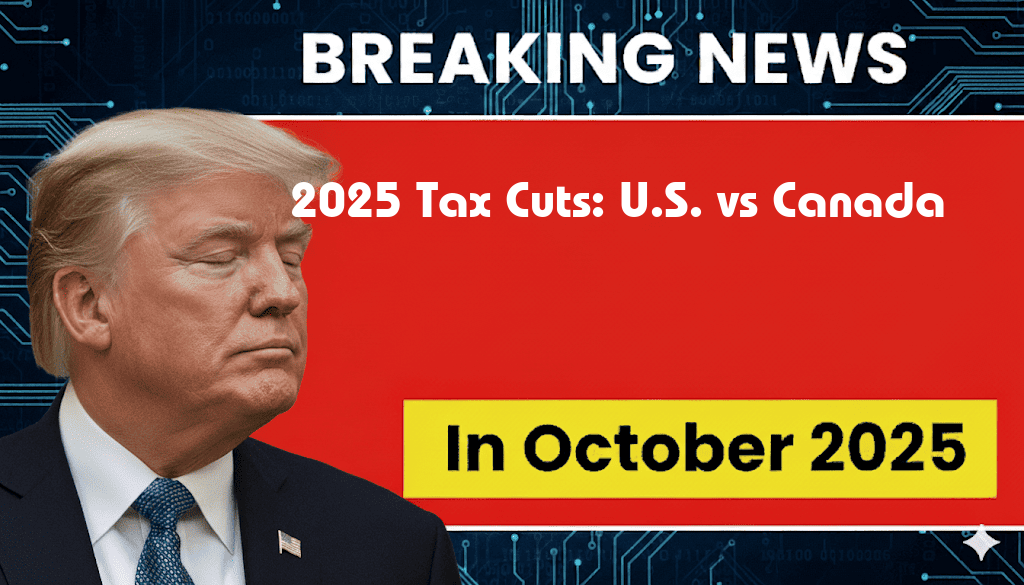As tax reform discussions gain momentum ahead of the 2025 fiscal year, a comparative analysis reveals significant disparities in potential tax cuts between the United States and Canada. The U.S. is contemplating a tax reduction estimated at $3,752 for the average taxpayer, while Canadian citizens could see an increase of C$5,200 in their disposable income due to similar adjustments. These figures underscore the contrasting approaches to tax policy in North America, reflecting broader economic strategies and the political landscapes influencing them.
Understanding the Proposed Tax Cuts
The proposed tax cuts in both countries arise from ongoing debates about economic recovery and fiscal responsibility. In the U.S., the focus has shifted to stimulating growth by providing relief to middle-income families. Meanwhile, Canada is looking to enhance public services funded by a more equitable tax system.
U.S. Tax Cuts: What to Expect
- Background: The U.S. tax cuts are part of a broader economic strategy aimed at bolstering consumer spending.
- Target Audience: Primarily aimed at middle-class families, the expected cut of $3,752 could significantly impact disposable income.
- Implementation: If passed, these cuts would take effect in 2025, pending legislative approval.
Canada’s Approach to Tax Adjustments
- Background: In Canada, the proposed increase of C$5,200 in disposable income reflects a commitment to improving social services.
- Target Audience: Aimed at supporting low- and middle-income families, the adjustments may also include targeted benefits for specific sectors.
- Implementation: Similar to the U.S., these changes will be subject to parliamentary approval and public discourse.
Comparative Analysis of Tax Cuts
To better understand the implications of these tax adjustments, a side-by-side comparison illustrates the differences in fiscal strategies:
| Country | Estimated Tax Cut/Increase | Target Demographic | Purpose |
|---|---|---|---|
| United States | $3,752 | Middle-class families | Stimulate consumer spending |
| Canada | C$5,200 | Low- and middle-income families | Enhance public services |
Economic Implications
The different approaches to tax cuts in the U.S. and Canada may have varying implications for their respective economies. In the U.S., a focus on consumer spending could lead to increased economic activity, while in Canada, the emphasis on public service enhancements could result in long-term investments in health, education, and infrastructure.
Political Context
The political landscape in both countries plays a crucial role in shaping these tax policies. In the U.S., the current administration is advocating for tax relief as a means to invigorate the economy following the pandemic. Meanwhile, Canada’s government prioritizes equitable taxation to fund social programs, which has become a central issue in recent political debates.
Public Sentiment and Future Considerations
Public opinion on these tax adjustments is mixed in both countries. In the U.S., many citizens express concern about the efficacy of tax cuts in driving meaningful economic change. Conversely, Canadians are increasingly supportive of tax reforms aimed at improving public services, reflecting a desire for government investment in welfare programs.
As the discussions unfold, both the U.S. and Canada must navigate complex economic landscapes while addressing the needs of their citizens. The outcome of these proposed tax cuts may significantly influence the fiscal health and social equity in both nations.
For further reading on the economic implications of tax cuts, visit Forbes and Wikipedia.
Frequently Asked Questions
What are the main tax cuts expected in 2025 for the U.S. and Canada?
The article highlights that the U.S. is projected to have a tax cut of $3,752, while Canada is expected to see a tax reduction of C$5,200. This comparative analysis examines the implications of these cuts on taxpayers in both countries.
How do the tax cuts in the U.S. and Canada compare?
The tax cuts in the U.S. amount to $3,752, while those in Canada total C$5,200. The comparison considers not only the monetary differences but also the impact on the respective economies and individual taxpayers.
What factors contribute to the differences in tax cuts between the U.S. and Canada?
Differences in tax cuts can be attributed to various factors, including government policy, economic conditions, and differing taxation systems in each country. The article delves into how these factors influence the size and scope of tax relief.
Who will benefit the most from these tax cuts in 2025?
The beneficiaries of the tax cuts are likely to be middle-income earners in both the U.S. and Canada. The article outlines how these cuts aim to provide financial relief and stimulate economic growth for families and individuals.
What should taxpayers do to prepare for the upcoming tax changes?
Taxpayers should stay informed about the specific details of the tax cuts and consider consulting a financial advisor to understand how these changes may affect their personal finances. The article encourages proactive planning to maximize the benefits of the tax cuts.

Leave a Reply